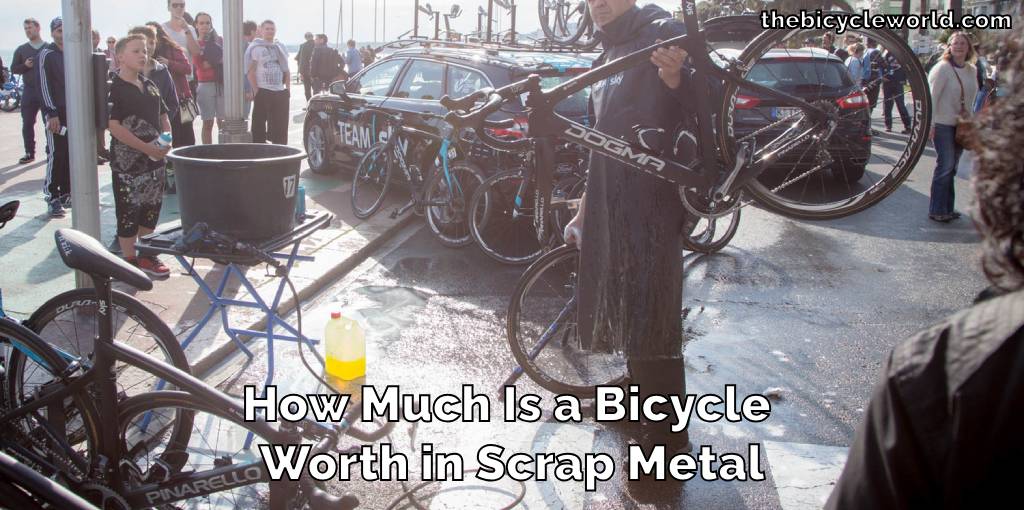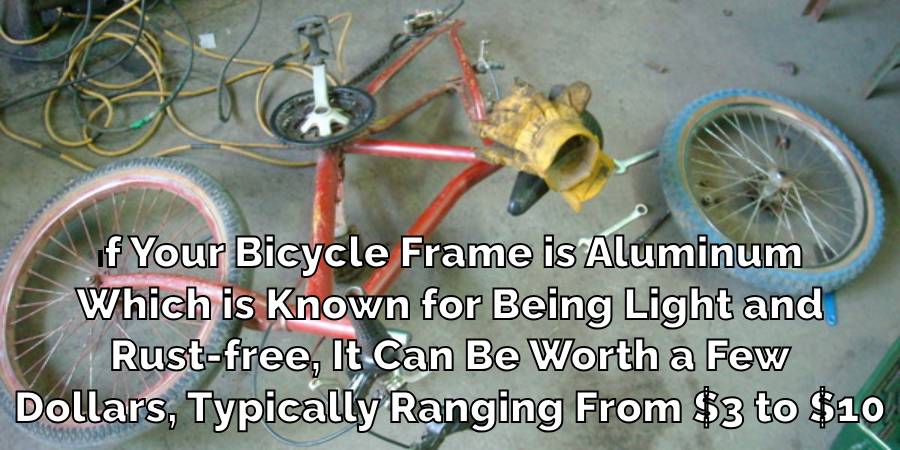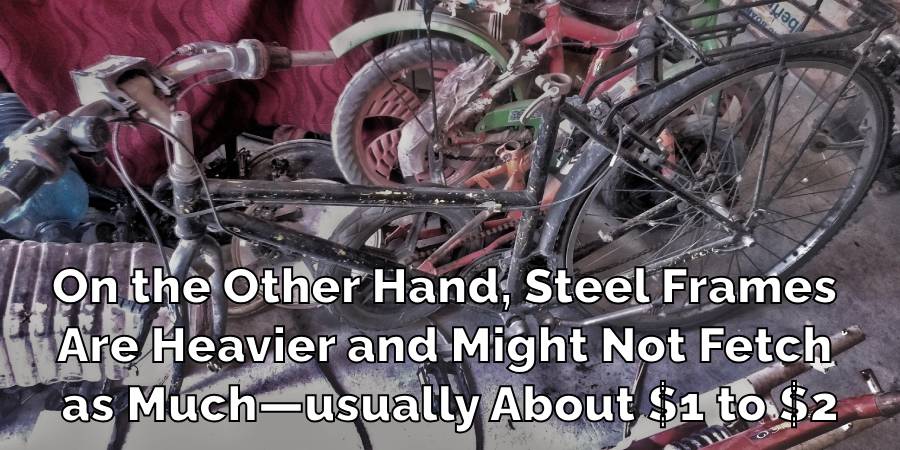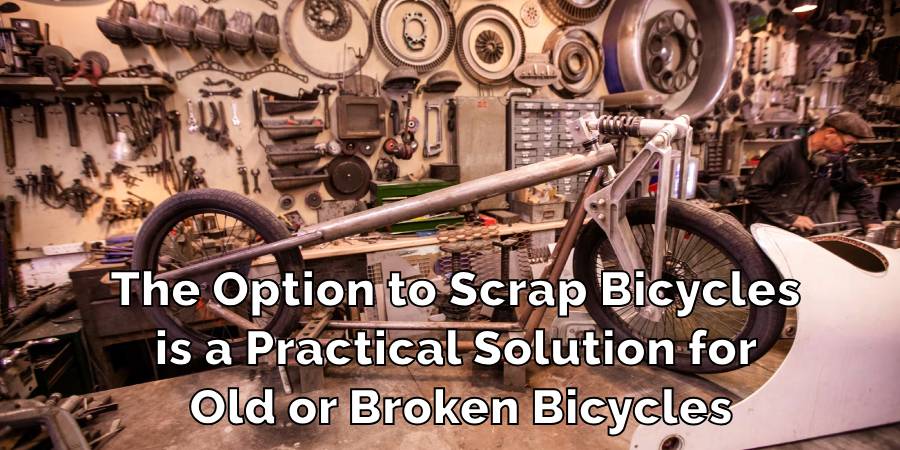How Much Is a Bicycle Worth in Scrap Metal
Introduction
Evaluating the scrap metal value of a bicycle involves a mix of practical and environmental factors. The worth of scrap metal is primarily determined by its weight and composition, with common metals such as steel and aluminum making up the majority of a bicycle’s materials.
A bicycle, when stripped down to these metals, yields a certain economic value, which may be relatively modest. This worth is dynamic, reflecting the ongoing market rates for scrap metal.

However, the true value also includes the ecological aspect of recycling — transforming old bicycles into usable raw materials, thereby reducing the need for new resources and supporting a more sustainable management of materials.
It’s important to see this as an opportunity to contribute positively to the environment while also possibly earning some money. With this perspective in mind, let’s dive deeper into how much is a bicycle worth in scrap metal and how this translates into a tangible benefit for both individuals and the planet.
Understanding Bicycle Worth in Scrap Metal
The concept of a bicycle’s value in the world of scrap metal is rooted in its recyclable parts. Mainly constructed from metals like aluminum and steel, bicycles can be broken down and these materials reclaimed for future use.
The value of these metals as scrap is subject to change, driven by the demand in the recycling market, the quality and condition of the metal, and the prevailing rates offered for scrap.
This valuation process breathes new life into bicycles that are no longer serviceable, transforming them from mere transport tools to valuable commodities.
The ability to recycle these materials also supports environmental conservation efforts. Each bicycle recycled means less raw material is needed for new products, easing the pressure on natural resources.
When assessing a bicycle’s scrap worth, one must consider the type and condition of the metal, the weight of the recyclable material, and the going rate for such metals. This understanding not only helps in realizing the potential cash value but also the larger impact on resource conservation.
Assessing a Bicycle’s Scrap Metal Value
The scrap value of a bicycle can be surprisingly nuanced. A bicycle’s frame, often made of aluminum or steel, is the main contributor to its scrap value. Aluminum is lightweight and rust-resistant, while steel is heavier but also more prevalent.
Other parts, such as gears and chains, may contain valuable metals like stainless steel. The price fetched for these materials fluctuates based on market conditions, the bicycle’s condition, and the recycler’s rates. To get a precise estimate, one must strip the bicycle down to its metal components and weigh them.
This weight can then be multiplied by the current price per pound of the respective metal. For instance, if aluminum is going for $0.50 per pound and your bicycle’s frame weighs 10 pounds, you could expect around $5.00 for just the frame in scrap metal.
Top Most Valuable Scrap Metals in Bicycles
- Aluminum: Found in frames, handlebars, and rims.
- Steel: Makes up the bulk of some frames, chains, and sprockets.
- Stainless Steel: Occasionally used in high-end bicycle components.
- Copper: Found in small quantities in electronics for electric bicycles.
- Brass: Used in some bicycle decorations or older components.
How Much Is a Bicycle Worth in Scrap Metal
When considering the value of a bicycle as scrap metal, it’s important to know what factors play a role. Bicycles are made of various metals, which can have different scrap values. The weight of the bicycle and the current market prices for scrap metals like steel or aluminum are crucial in determining its worth.
The Worth of a Bicycle Frame in Scrap
The value of a bicycle frame when sold as scrap depends mainly on the material it’s made from and its weight. If your bicycle frame is aluminum, which is known for being light and rust-free, it can be worth a few dollars, typically ranging from $3 to $10.

The exact amount you’ll get is linked to how much aluminum scrap is going for at the time you sell it and how heavy your frame is. On the other hand, steel frames are heavier and might not fetch as much—usually about $1 to $2.

This is because steel is more common and has a lower per-pound price in the scrap market. Remember, these prices can go up or down depending on the current demand for these metals.
It’s always a good idea to check the latest scrap metal rates or get a quote from a local scrapyard to know exactly what your bicycle frame might be worth in scrap. This way, you can make an informed decision about whether to scrap your bicycle frame and how to get the best possible return for it.
Bicycle Acceptance by Scrap Metal Collectors
Most scrap metal collectors are open to accepting bicycles as they consist of metals that are recyclable and valuable.
However, the policies and preferences of scrap yards can differ widely. Before you load up your bicycle and head to a collector, it’s a good idea to give them a quick phone call. This will save you time by confirming they are currently accepting bicycles.
Some collectors might have specific requirements for accepting bicycles, such as needing them to be broken down into parts or free from non-metal components. Furthermore, the rate they offer can vary based on the current market for metals and the condition of your bicycle.
By doing a bit of research and reaching out to your local collectors, you can find the best place to take your bicycle for scrap and ensure you’re following their guidelines, making the process smooth and beneficial for both parties.
Scrapping Bicycles
The option to scrap bicycles is a practical solution for old or broken bicycles. The scrapping process requires separating the metal parts from the rest of the bicycle.
Metals like steel and aluminum, found in the frame, handlebars, and wheels, are valuable to scrap dealers. Non-metal parts, such as the seat, rubber handles, and tires, must be removed and disposed of in an environmentally friendly manner, as these are not accepted by scrap metal facilities.

This careful separation ensures that the metal can be recycled efficiently, reducing waste and helping the environment. To get the most out of scrapping your bicycle, it’s useful to know a bit about the different metals it contains and how to dismantle it.
Scrap yards often pay by the weight of the metal, so understanding the breakdown of your bicycle’s components can give you an idea of its potential scrap value. Responsible scrapping contributes to resource conservation and can offer a bit of compensation for what was once just an unused item taking up space.
Most Valuable Scrap Metal Components
Aluminum and steel are the key players when it comes to the scrap value of a bicycle. Aluminum brings in higher value due to its light weight and strength, commonly used in bicycle frames and parts like handlebars and rims.
Steel, while not as valuable per pound, is appreciated for its sturdiness and is a mainstay in many bicycle frames.
Both metals are highly recyclable, making them a staple in scrap yards. Despite market price variations, their demand remains strong, providing not only monetary benefits but also an eco-friendly way to recycle old bicycles.
Most Profitable Scrap
In the vast world of scrap metal, some materials stand out for their high value. Gold and platinum are among these top-tier metals, fetching the highest prices when sold as scrap.
Their worth stems from their rarity and the significant role they play in various high-end applications, such as in electronics and jewelry. However, these precious metals are typically not components of bicycles.
For those scrapping everyday items like bicycles, the focus will be on more common metals such as aluminum and steel. While not as lucrative as gold or platinum, these metals are readily found in a bicycle’s makeup and still offer financial gains.
The process of recycling these common metals is straightforward and serves a dual purpose: it supports the recycling economy and helps protect the environment by conserving resources.
Final Thoughts
The value of a bicycle as scrap metal extends beyond the pocketbook it represents a commitment to caring for our planet. Earning money from an old bicycle’s metal parts is a modest benefit, but the real value lies in the environmental impact.
Recycling a bicycle means less raw material is needed, which can help save natural resources like iron ore, bauxite, and coal since manufacturing new metal parts from scratch uses more of these resources and energy.
Moreover, recycling helps cut down on the amount of waste sent to landfills, reducing pollution and the need for new dumping grounds. This article has explored how much is a bicycle worth in scrap metal.
It’s a simple action with a ripple effect: less mining and less waste lead to less pollution and a lighter footprint on the earth. So, when you recycle a bicycle, you’re not just turning metal into money you’re playing a part in a bigger cycle that supports a cleaner, healthier environment.






